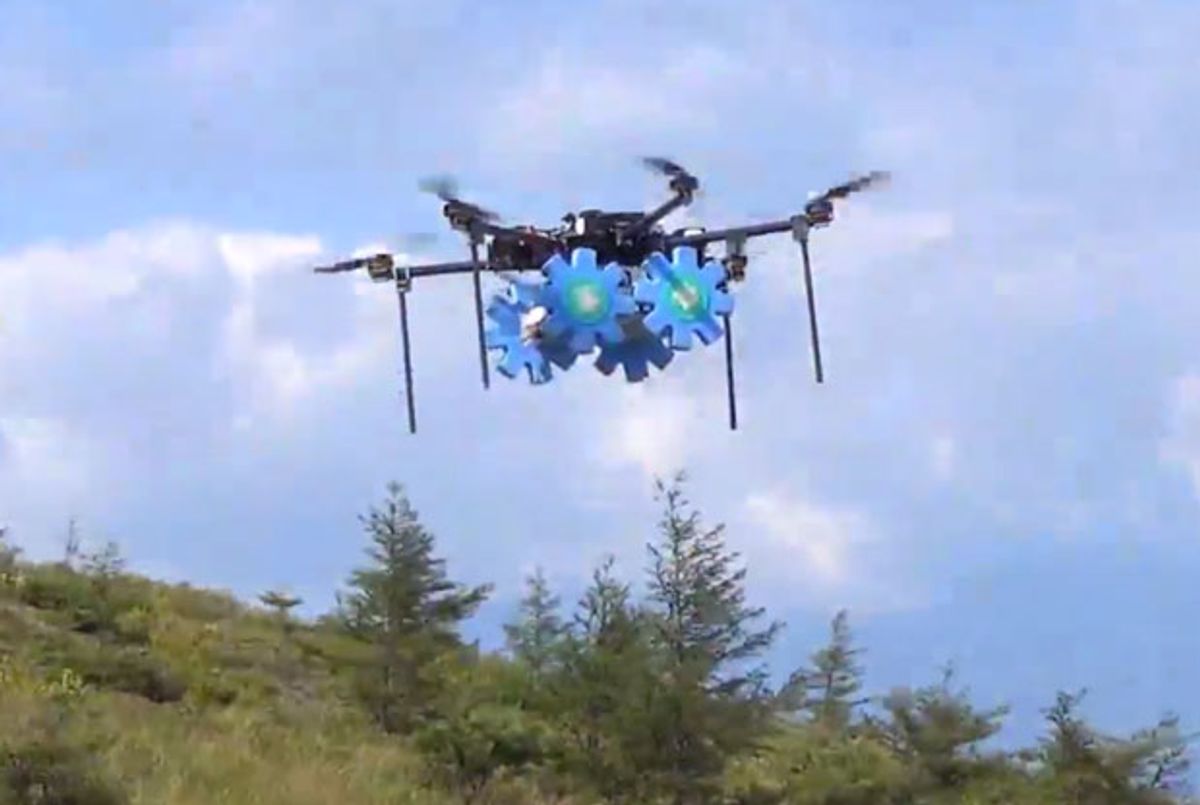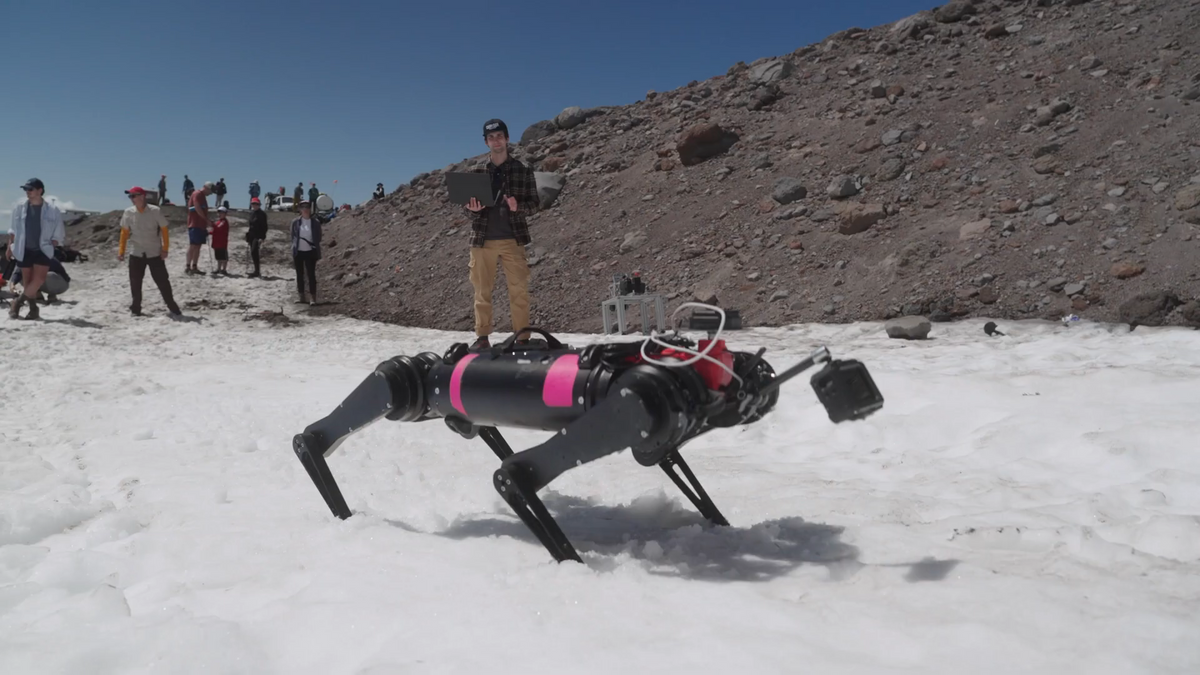When Mount Ontake erupted in Japan a few weeks ago, it was completely unexpected. No significant earthquakes, no steam or gas releases, nothing. Usually, some warning does exist, and the best that we can to is to monitor active volcanoes as carefully as we can to try and spot whatever warning signs that are there. This is especially problematic with volcanoes that are undergoing frequent periods of activity, where it’s not safe to get close to them to determine when a minor eruption might turn into a major one. Not safe, you say? There’s a solution for that: send in the robots.
Keiji Nagatani, a professor at Tohoku University in Japan, has spent the last half decade developing robotic systems for volcano exploration. For the last few years, he’s been working on ways of exploring remote, potentially dangerous volcanic areas using UAVs in collaboration with ground robots. Here’s a video from a test last month on Japan’s Mount Asama:
The ground robot is called Clover, and the UAV is called Zion. The robots were controlled over a 3G connection from about 3 kilometers away. Since 3G can be unreliable and is vulnerable to terrain-induced blind spots, the researchers have developed a system to use more conveniently placed robots as signal relays.
Clover robots could be equipped with small sensor packages, like a gas sensor, but it’s also important to be able to analyze rock samples directly. Strawberry is a robotic claw that hangs from the bottom of Zion and can be used to collect rocks or soil or stuffed alien toys or whatever else a claw dangling from the sky is good for picking up. If you watch closely, in addition to a claw device, there’s also an actuated roller that helps to scoop up smaller rocks and dust:
As far as I’ve been able to tell, none of these robots have yet been tested on an active volcano, but hopefully the Japanese researchers are getting close to doing that. Because one thing we’ve learned from previous disasters is that robots can be a huge help, so the more we test and improve them under real-world conditions, the better they’ll be when we really need them.
Evan Ackerman is a senior editor at IEEE Spectrum. Since 2007, he has written over 6,000 articles on robotics and technology. He has a degree in Martian geology and is excellent at playing bagpipes.


